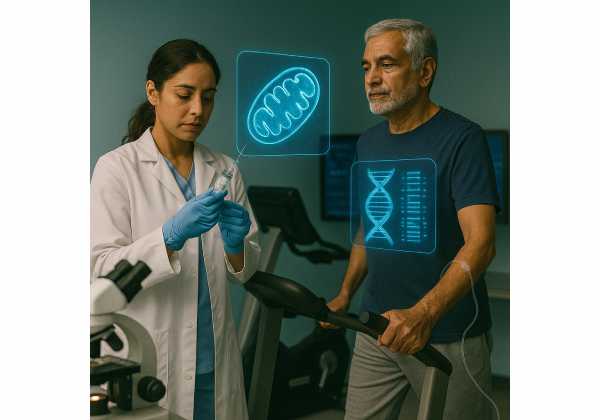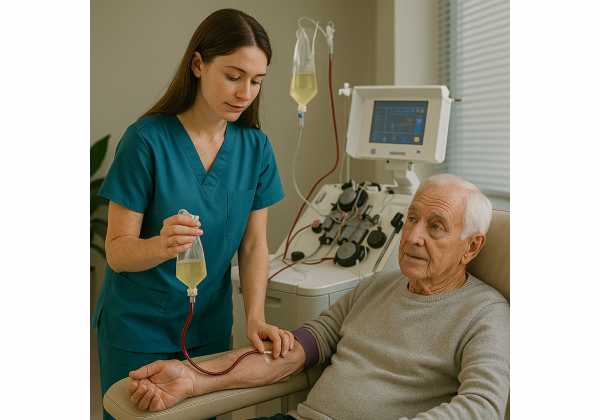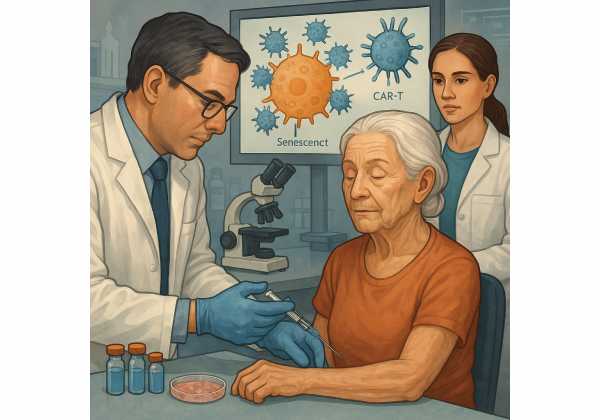Autophagy-Targeted Drugs for Longevity: mTORC1-Selective and ULK1 Pathways
Autophagy—the cell’s self-recycling program—declines with age. When this cleanup falters, damaged proteins and organelles accumulate, stress signaling rises, and tissues lose resilience. Drug developers are pursuing agents that tune autophagy in a measured, pathway-aware way rather than simply turning the dial up or down. This article maps the landscape: why autophagy matters for aging biology, how mTORC1-selective inhibition differs...
Combination Longevity Trials: Stacking Mechanisms and Smarter Study Design
Designing trials that test more than one aging intervention at a time is no longer a fringe idea. Biology of aging is multifactorial; metabolism, inflammation, proteostasis, and regeneration all move together. If we want to slow decline meaningfully, we likely need “stacks” that hit distinct targets and play well together. The question is how to test these combinations quickly,...
Crosslink Breakers for Vascular Aging: What Comes After Alagebrium
The stiffening of large arteries is one of aging’s most measurable signatures. As collagen and elastin accumulate non-enzymatic crosslinks, vessels lose their snap-back and pulse pressure rises. Two decades ago, alagebrium (ALT-711) put “crosslink breaking” on the map with early trials that nudged arterial compliance in older adults. Yet the path from proof-of-concept to standard therapy stalled. This article...
Epigenetic Rejuvenation Compounds: Small-Molecule Reprogrammers
Aging reshapes gene expression long before disease appears. Chromatin loosens in the wrong places, tightens in others, and methyl marks drift in patterns that predict risk years in advance. The idea behind epigenetic rejuvenation is straightforward: if age-related programs are partially reversible, we might restore youthful regulation without erasing cell identity. Small molecules—rather than gene therapy—offer a flexible way...
Exosomes and Extracellular Vesicles in Aging: Promise and Pitfalls
Exosomes and other extracellular vesicles (EVs) are tiny, membrane-bound packages that cells send and receive. They carry proteins, lipids, and genetic messages that can steer inflammation, regeneration, and metabolism—the same processes that drift with age. In the last decade, EVs have moved from curiosity to candidate therapies and biomarkers. Yet enthusiasm has outpaced standards: isolation methods vary, purity is...
GLP-1s and Longevity: Weight, Cardiometabolic Risk, and Open Questions
Glucagon-like peptide-1 receptor agonists (GLP-1s) have moved from diabetes drugs to a broader platform that reshapes appetite, weight, and cardiometabolic risk. Their appeal for healthy aging is practical: they reduce clinically relevant outcomes now while hinting at broader benefits in inflammation, liver health, and sleep-disordered breathing. Yet “longevity” is more than lower weight or nicer lab values. It demands...
Hormone-Based Rejuvenation: Klotho, FGF21, and GDF11 Candidates
Aging biology is increasingly defined by circulating signals that coordinate stress responses, nutrient handling, and tissue repair. Three hormones—Klotho, FGF21, and GDF11—sit near the center of this conversation. Each is linked to multi-system effects that touch the brain, vasculature, liver, muscle, and kidney. Yet “rejuvenation” is not a single pathway, and these molecules differ in receptors, half-life, and risk...
Metformin for Healthy Aging: What the Trials Show and Do Not
Metformin has earned unusual attention for a decades-old, inexpensive drug. Beyond glucose control, it appears to influence pathways tied to aging: cellular energy sensing, mitochondrial efficiency, inflammation, and gut–brain signals that regulate appetite and weight. At the same time, real-world data are messy, prevention trials in non-diabetic adults are limited, and not every effect points in the same direction....
Microbiome Therapeutics for Healthy Aging: Consortia, FMT, and Postbiotics
The human microbiome shifts with age in ways that touch metabolism, immunity, and brain function. Some changes are adaptive; others drive inflammation, insulin resistance, and frailty. Microbiome therapeutics aim to redirect these trajectories using three main levers: living microbial communities, transplanted ecosystems, and non-living microbial products. Each approach carries different benefits, risks, and practical trade-offs for older adults. This...
Mitochondrial Therapies for Longevity: Elamipretide and mtDNA Editing
Mitochondria do more than make ATP. They organize cellular signaling, shape redox tone, and decide whether cells adapt or fail under stress. When their membranes fray or their genomes accumulate damage, whole organs slow down: muscles fatigue sooner, hearts lose reserve, and brains process information less efficiently. Therapeutic strategies now target two leverage points. The first is membrane integrity,...
Neuroprotective Emerging Therapies: From Senolytics to ISR Modulators
Age-related brain change is not one process but many. Glial cells shift toward pro-inflammatory states, protein quality control weakens, and the integrated stress response (ISR) lingers longer than it should. Together, these pressures erode synapses, slow processing speed, and raise the odds of neurodegeneration. A new wave of therapeutics aims to interrupt this cascade—by clearing senescent glia, modulating the...
Partial Cellular Reprogramming for Longevity: OSK and Safety Considerations
Partial cellular reprogramming—brief, carefully dosed expression of Yamanaka factors—has moved from an intriguing lab trick to a serious candidate for restoring tissue function with age. Researchers now test “just enough” reprogramming to reset epigenetic marks and stress responses without erasing cell identity. The appeal is obvious: if age is, in part, a reversible information problem, then precise reprogramming could...
Plasma-Based Therapies: Therapeutic Exchange and Young Factors
Modern interest in plasma-based interventions sits at the crossroads of aging biology, transfusion medicine, and neurology. Two concepts dominate the conversation. The first is therapeutic plasma exchange (TPE), a well-established procedure that removes circulating proteins and replaces plasma—usually with albumin—to reset pathological signaling. The second is the more speculative idea that “young” plasma carries rejuvenating factors. This article explains...
Rapamycin and Rapalogs for Longevity: Evidence, Dosing Models, and Risks
Rapamycin and its derivatives (“rapalogs”) sit at a rare intersection: they are established immunosuppressants in transplantation and oncology, yet they also modulate core pathways that regulate aging biology. That dual identity creates both opportunity and confusion. On one hand, decades of mechanistic and animal data suggest that tempering the mTOR pathway can extend healthspan. On the other hand, translating...
Senescence-Targeted Immunotherapy: Vaccines and CAR-T Approaches
Cellular senescence was once viewed as a biological dead end—a protective stopgap for damaged cells. We now recognize that senescent cells linger, accumulate with age, and broadcast inflammatory signals known as the senescence-associated secretory phenotype (SASP). That broadcast reshapes tissues, blunts repair, and feeds chronic disease. Immunotherapy reframes the problem: instead of only trying to dampen SASP, teach or...
Senolytics for Healthy Aging: Dasatinib plus Quercetin and Next-Gen Agents
Senescent cells are damaged cells that stop dividing yet refuse to die. They accumulate with age and stress, secrete inflammatory factors, and distort tissue repair. Senolytics—drugs that selectively remove these cells—aim to lower that burden and restore healthier function. Among the earliest candidates, the combination of dasatinib plus quercetin (D+Q) opened the door to human trials and a broad...




















